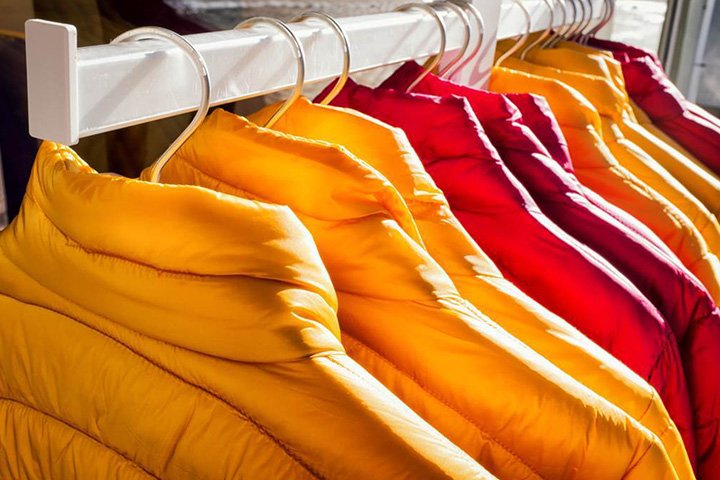Cn-down > Domestic news > News content
2024-08-19 来源:金绒 浏览量:1079
Market Summary
In the 33rd week of 2024 (August 12-18), the overall market was stable, with grey goose down falling slightly.

After nearly a month of volatile decline, the market finally showed signs of stabilizing. Recently, the sales of white duck down have accelerated, and the price has shown signs of rebounding, while the trading of gray duck down has almost stopped, and the demand for gray goose down is relatively weak, which has begun to squeeze the bubble.
Looking back at August in the past, product companies would be in a state of placing orders and purchasing throughout the month, but this year's consumption is sluggish and clothing companies are also in recession, so it seems that this year's purchasing season will be relatively tight. The "golden September and silver October" has entered the countdown, and the most important node in the second half of the year is about to usher in Double Eleven.
As the school season approaches, pork prices have risen significantly due to supply and demand, but the performance of duck meat is not satisfactory. The distribution side may be mainly stable, but the total supply remains generally stable compared to July. However, since mid-August, the average daily output of commercial ducklings has shown a downward trend.
Good News This Week
Quang Viet, a major down jacket OEM manufacturer, announced that its consolidated revenue in July 2024 was 2.222 billion yuan, an increase of 6.24% over the same period last year, ending more than a year of negative growth.
Guangyue pointed out that customer inventory adjustments have been completed and inventories have returned to healthy levels. Shipments in the second half of the year will be brisk, ushering in an operational turnaround. Operations will continue to heat up in the second half of the year and are expected to maintain a positive growth trend.

Another major down jacket OEM manufacturer, KWONG LUNG, achieved revenue of NT$840 million in July this year, a monthly decrease of 11.1% and a year-on-year increase of 2.6%. Among them, garments achieved revenue of NT$596 million, a year-on-year increase of 4.1%. It has maintained monthly annual growth for two consecutive months. The cumulative consolidated revenue for the first seven months was NT$4.867 billion, a year-on-year decrease of 3.3%.
Guanglong pointed out that the revenue in the first five months of this year showed positive year-on-year growth, mainly benefiting from the stronger momentum of major customer NITORI in pulling goods. As the third and fourth quarters enter the peak season for home textile product shipments, it is expected that the revenue this year will increase by single digits. In terms of down, due to the reduction in goose and duck farming in mainland China, the supply has shrunk and prices have risen. The goal for the second half of the year is to make stable profits.
Regarding the second half of the year, Kwong Lung remains cautiously optimistic that the shipment momentum of the garment sector in the second half of the year will be significantly warmer compared to last year, maintaining double-digit growth quarter by quarter.
source | 中时新闻网、经济日报
The Farmers' Almanac warns that the winter of 2024/25 will be a "wet cyclone," meaning there will be lots of precipitation and storms. The northern Plains and Great Lakes regions of the United States will be shrouded in cold weather throughout the season; southern regions should expect some cold snaps, although temperatures will be slightly milder overall.
According to its forecast, winter precipitation will be above normal. Snow will be more abundant in the interior and mountains of New England and the Northeast, while areas closer to the coast can expect more rain. The Pacific Northwest, the Great Lakes region and the Southeast should usher in a wet, white, and muddy season. In contrast, the Southwest and South Central states will face a dry winter with below-normal precipitation.

The almanac also recommends keeping an eye on the last week of January, when an active storm track could bring heavy precipitation and strong winds to the eastern half of the U.S. A cold snap will hit during the last week of January through early February, with the northern Plains likely to see the most extreme cold.
The Farmers' Almanac is a long-standing annual publication that provides weather forecasts, gardening instructions, life tips, and more. It has become part of American culture since it was first published in 1818 and is known for its unique, long-range weather forecasts.
source | 农民年鉴
Recently, a quilt brought back from Paris by Jiangsu Olympic swimmer Zhang Yufei has become popular on Douyin. On the Douyin account of Zhang Yufei's assistant coach, "Feidi Swimming", Zhang Yufei said that the Olympic quilt was "very comfortable to cover", and the comment section immediately "planted grass" with countless fans clamoring to buy the same model as their idol.
"I was so excited to see the printed quilts produced by my own factory." Netizen "Printing Old Sun" couldn't help but write this comment under the video. So far, the comment has received nearly 400 comments and nearly 7,600 likes.

It turns out that the printing technology of this Olympic quilt comes from Jiangsu Longda Textile Technology Co., Ltd. in Wuxi. However, due to copyright issues, this Olympic quilt is not available in China.
However, since the Olympic prints became popular, Longda Company rushed to produce Olympic-themed print duvet samples within 10 hours that day and set up a live broadcast room as soon as possible. The Douyin account of "Printing Old Sun" has released the company's "Olympic Theme Printed Duvet" production footage to warm up for the upcoming sales.

In the men's 4×100m medley relay final at the Paris Olympics, the Chinese team consisting of Xu Jiayu, Qin Haiyang, Sun Jiajun and Pan Zhanle won the gold medal. While celebrating the victory, many netizens noticed the red, white and black long down jackets that the swimmers wore when they entered the venue.
The long down jackets, designed to help keep the muscles warm, were worn by these tall, broad-shouldered, narrow-waisted swimmers to look like they were on a catwalk. Netizens on Weibo commented: They even saved money on models, and Anta's mouth was so funny. The handsome picture sparked public discussion and won a wave of love from netizens. Some people lined up in the comment section, asking for the link to the same style online.

source | 新华日报、无锡博报生活、Hi威海
Since July, many people have chosen to travel to western Sichuan and the northwest, and summer travel, wilderness travel, hiking, self-driving and other in-depth travel have become popular trends in summer travel. Due to the large temperature difference between day and night in these areas, and the frequent occurrence of extreme weather such as storms, warm clothing, including thin down jackets, is a must for travel.
Especially in high-altitude scenic spots such as Siguniang Mountain and Daocheng Yading, where the temperature is particularly low at night, light and heat-locking down jackets are a must-have for tourists. JD.com consumption data shows that since May this year, JD.com's down jacket transaction volume has increased by 104% month-on-month, and the transaction volume has increased by 148% year-on-year since July.

It is worth mentioning that with the arrival of summer vacation, off-season consumption in Sichuan and Xinjiang has shown an upward trend. In the past week, the sales volume of down jackets in these two places has increased by 84% and 96% respectively. Among them, warm clothing from Bosideng, Heilan Home, Peacebird and Snow Flying are particularly popular.
For consumers who love hiking and mountaineering, since the temperature in the scenic area fluctuates between 0-5℃, it is appropriate to wear thin down jackets and vests when climbing. After reaching the top, put on a medium-length down jacket to keep warm and lock in the temperature to ensure the comfort of outdoor sports.
source | 消费日报网
Bad News This Week
On August 8, local time, the Climate Prediction Center of the National Oceanic and Atmospheric Administration (NOAA) reported that the probability of La Niña occurring between September and November 2024 is 66%, and the probability of continuing until the Northern Hemisphere winter of 2024-2025 (November to January of the following year) is 74%.
ENSO remained neutral during July, with sea surface temperatures near average across much of the equatorial Pacific. ENSO neutral refers to a period when neither El Niño nor La Niña is present.

By comparison, last month's forecast gave a 70% chance of La Niña developing from August to October and a 79% chance from November to January. So far, the rate of decline in sea surface temperatures associated with La Niña has been slower than initially expected, although atmospheric and oceanic conditions remain favorable for La Niña to develop in the coming months.
At the same time, multiple models believe that La Niña is likely to occur, but the intensity of this event will be weakened. The current forecast is that the probability of this round of La Niña reaching an informal "moderate" peak is about 40%, indicating that the intensity of La Niña is expected to weaken.
source | 金绒采编自NOAA、ENSO博客
Since August, the RMB exchange rate against the US dollar has shown a clear appreciation trend, with both offshore and onshore RMB rising above the 7.12 mark, hitting a new high since January this year. After experiencing a long period of RMB depreciation, foreign trade people's expectations have not changed, and this round of appreciation has undoubtedly caught them off guard.
For foreign trader Meng Zhuo, the loss is even greater. His company is a large-scale clothing manufacturer in the Yangtze River Delta region that mainly exports autumn and winter clothing. Its products are mainly shipped from late June to August each year. "Considering the transportation and customs declaration time, it is now the peak period for foreign exchange settlement after shipment. The exchange rate during this period is the most important throughout the year."
Around Meng Zhuo and his colleagues, there is a large clothing industry chain related to down jackets and cotton-padded clothes, which is also at the peak of shipment and foreign exchange settlement, and is inevitably affected by the recent appreciation of the RMB.

In Meng Zhuo's view, for a large number of foreign trade companies, most of their income must be converted into RMB as soon as possible so that they have funds to pay suppliers, "and suppliers are also waiting to be paid."
Although summer is the off-season for his industry, they still have some goods in backlog due to the pressure of rising shipping costs since May. "A Middle Eastern customer placed an urgent order before, and we quickly loaded it for him. As a result, two months have passed, and he still hasn't shipped the goods because he thinks the freight is too high." For this reason, they are also facing the pressure of payment period, and the next period will be a period of rushing to ship goods.
Although summer is the off-season for his industry, they still have some goods in backlog due to the pressure of rising shipping costs since May. "A Middle Eastern customer placed an urgent order before, and we quickly loaded it for him. As a result, two months have passed, and he still hasn't shipped the goods because he thinks the freight is too high." For this reason, they are also facing the pressure of payment period, and the next period will be a period of rushing to ship goods.
source | 第一财经
Bangladesh's political unrest has lasted for more than a month since protests broke out on the Dhaka University campus on July 15. The political unrest has had a huge impact on the country's garment export industry. From mid-July to early August, all garment factories in Bangladesh were shut down for a time, and have only recently resumed operations.
According to the survey, the brand company most affected by the unrest is undoubtedly H&M, which purchases clothing from more than 1,000 garment factories in Bangladesh. In addition, brands such as Zara, Uniqlo, VF Corp, Levi Strauss, and Target have also been greatly impacted.
Some institutions believe that Chinese textile and clothing companies will benefit from this because a large number of orders from Europe, the United States, Japan and other countries will flow out of Bangladesh. Recently, textile and clothing companies in coastal areas such as Guangdong, Jiangsu, Zhejiang and Fujian have reported that the number of orders transferred from Bangladesh has an increasing trend.
However, industry insiders believe that although the spillover of textile and clothing orders caused by the unrest in Bangladesh has more or less brought benefits to my country's export-oriented enterprises, the benefits will not be prominent. On the contrary, for Chinese cotton textile and clothing companies, "the disadvantages outweigh the advantages."

On the one hand, spillover orders from Bangladesh will be preferentially distributed to low-cost textile and apparel companies in India, Indonesia, Pakistan, Cambodia, Vietnam and other countries. On the other hand, Chinese companies will receive relatively few spillover orders due to the stricter enforcement of the Xinjiang cotton import ban by Europe and the United States (strict traceability material requirements).
On the other hand, the widespread shutdown of Bangladeshi garment factories has had a significant impact on China's exports of cotton yarn, grey fabrics, fabrics, down and feathers to Bangladesh. Some contracts have been forced to be postponed or cancelled through negotiation, which has had a significant impact on the order-taking and order-scheduling of Chinese companies.
Bangladesh has always been the main market for my country's down and feather exports. According to customs data, from January to June this year, my country exported 604 tons of high-quality down to Bangladesh, a year-on-year decrease of 0.05%, and the export value was 251 million yuan, a year-on-year increase of 7.5%.
source | 中储棉信息中心、海关数据
News Situation
This week's news is mixed with both positive and negative news.
From the revenue performance of major down jacket OEM factories, we can see that the OEM industry is gradually recovering from negative growth, showing that the demand for down jackets has picked up. Looking ahead to the second half of the year, the shipment of garments and home textile products will enter the peak season, and operations are expected to maintain a positive growth trend.
Although the off-season marketing of down jackets has performed strongly in the domestic market, the foreign trade environment is full of uncertainty. The sharp appreciation of the RMB once caught down jacket foreign traders off guard, especially during the peak period of foreign exchange settlement from June to August, which seriously affected corporate profits.
The US Farmers' Almanac predicts that the winter of 2024/25 will bring a lot of snow and storms, which is good news for the down jacket market. However, due to the uncertainty of the global economy, especially the continued shrinking of the US manufacturing industry, the export of down jackets is still under great pressure.
 热门排行
中国三大羽绒生产基地之—广东吴川
全球最奢侈羽绒服排行
一件羽绒服需要多少只鸭子的羽绒?
飞丝是什么?能代替羽绒?别被骗了,三种方法让你告别假羽绒服!
2017羽绒原料价格一路上涨,究竟为何?
你的羽绒服为什么钻绒?涨知识了
羽绒被的价格一般是多少 通过成本看羽绒被价格
中国羽绒服四大品牌调查:到底谁才是最强王者?
羽绒金网:羽毛、羽绒、毛绒计价
《羽绒羽毛》、《羽绒羽毛检验方法》新版标准发布,2017年7月1日实施
热门排行
中国三大羽绒生产基地之—广东吴川
全球最奢侈羽绒服排行
一件羽绒服需要多少只鸭子的羽绒?
飞丝是什么?能代替羽绒?别被骗了,三种方法让你告别假羽绒服!
2017羽绒原料价格一路上涨,究竟为何?
你的羽绒服为什么钻绒?涨知识了
羽绒被的价格一般是多少 通过成本看羽绒被价格
中国羽绒服四大品牌调查:到底谁才是最强王者?
羽绒金网:羽毛、羽绒、毛绒计价
《羽绒羽毛》、《羽绒羽毛检验方法》新版标准发布,2017年7月1日实施
 推荐阅读
“吴川力量”助中国羽绒接轨世界
中国三大羽绒生产基地之—广东吴川
中羽协第二期新国标培训班 在“羽绒之乡”广东吴川成功举办
羽绒之乡:贵港桥圩镇将打造旅游休闲特色小镇
广西贵港桥圩镇:打造中国羽绒休闲旅游特色小镇
羽绒金网:羽毛、羽绒、毛绒计价
羽绒别急着收 中央气象台发布寒潮蓝色预警 部分地区降温超12℃
上海消保委检测 千元鹅绒被用鸭毛绒填充
冻哭丨降温10℃!鸡年首个寒潮预警来袭,你准备好了吗?
传统羽绒产业如何实现转型升级?四川玉泉镇产业集群发展
推荐阅读
“吴川力量”助中国羽绒接轨世界
中国三大羽绒生产基地之—广东吴川
中羽协第二期新国标培训班 在“羽绒之乡”广东吴川成功举办
羽绒之乡:贵港桥圩镇将打造旅游休闲特色小镇
广西贵港桥圩镇:打造中国羽绒休闲旅游特色小镇
羽绒金网:羽毛、羽绒、毛绒计价
羽绒别急着收 中央气象台发布寒潮蓝色预警 部分地区降温超12℃
上海消保委检测 千元鹅绒被用鸭毛绒填充
冻哭丨降温10℃!鸡年首个寒潮预警来袭,你准备好了吗?
传统羽绒产业如何实现转型升级?四川玉泉镇产业集群发展